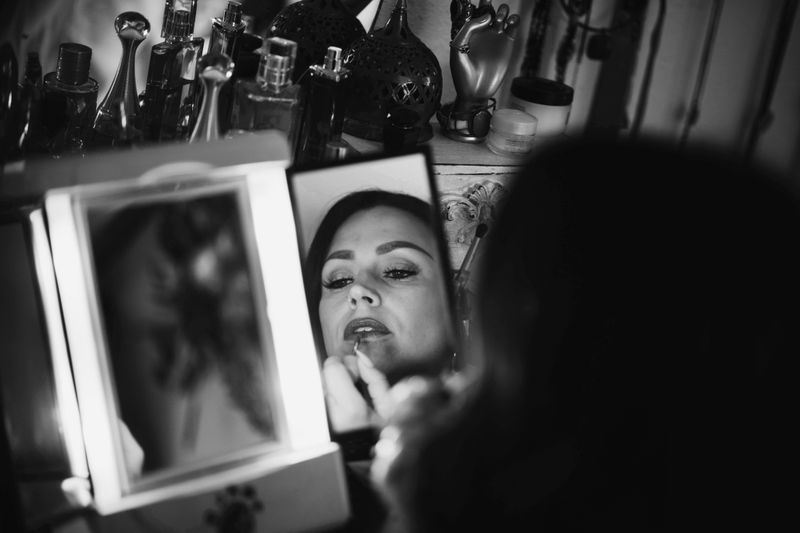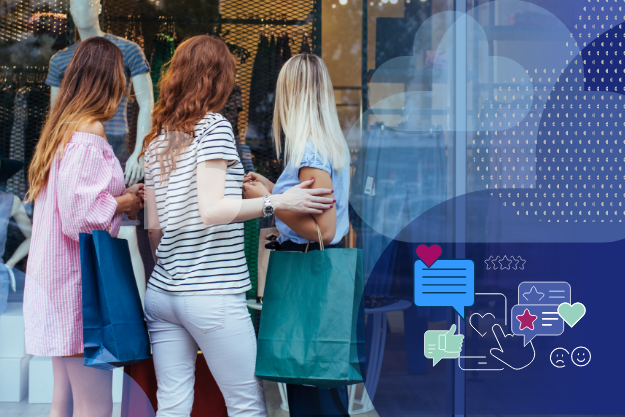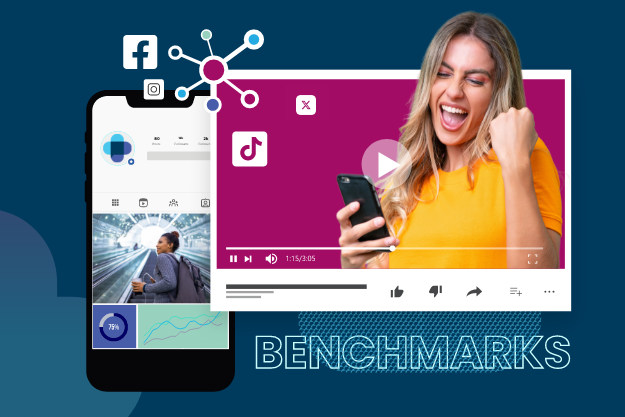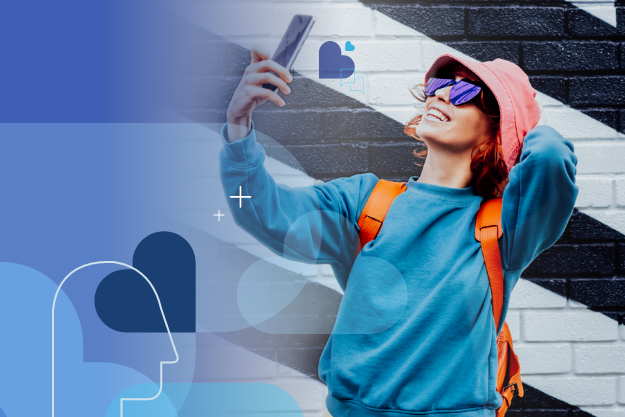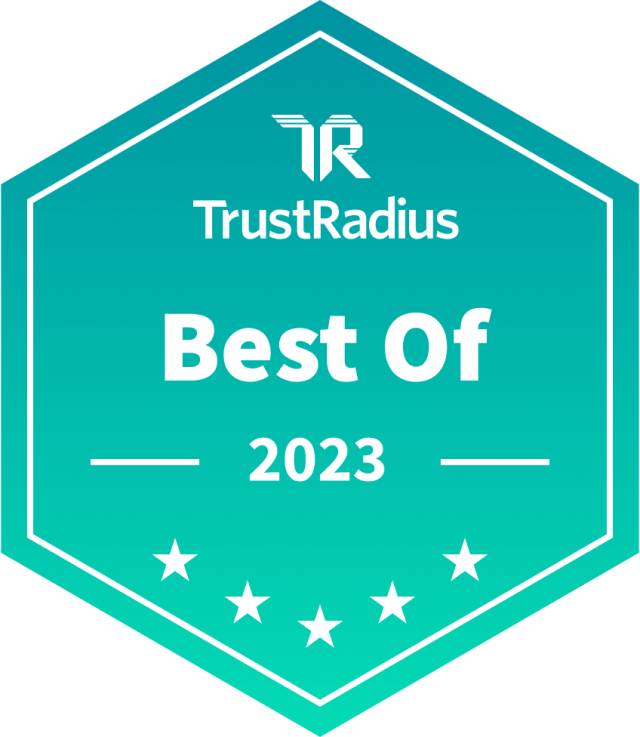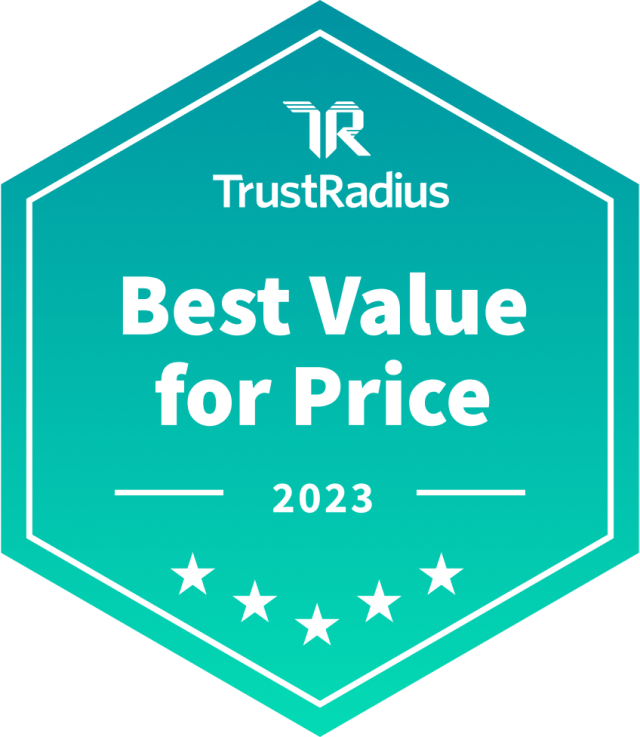Social media video is tailor-made for cosmetics brands as both makeup and social media are inherently visual. But as new channels emerge and others transform, brands are taking stock of their audiences and budgets to maximize their growth.
This quick guide will help you evaluate which popular social platform, YouTube, Instagram, or TikTok, will work best for your cosmetics company.
YouTube
Started in 2005, YouTube is one of the oldest social media platforms still in use. It's the second-largest search engine, and a staggering 95% of global internet users use YouTube. Great news for beauty brands: Of that 95%, the women are predominantly watching beauty videos (Omnicore, 2019).
The beauty space on YouTube is dominated by individual vloggers, not by brands. Since 95% of beauty content on YouTube is created by individuals, cosmetics brands have to focus more heavily on influencer marketing when using this platform (Digital Surgeon, 2018).
If you're looking to grow your brand presence with longer-form video content and influencer sponsorships, YouTube is a tried and true channel for brands to add value to their audiences. Remember that producing engaging content and branding your channel are critical elements for success, so make sure you have the right tools to create videos on YouTube.
Companies have less control over their brand narrative, but this can be a good thing if done right. Buyers are more trusting of user-generated content, making them more likely to buy a product after seeing a vlogger use it rather than seeing it presented by a company.
YouTube pros and cons
Pros
YouTube's audience includes almost every demographic imaginable.
The platform favors longer-form videos, and these are perfectly suited to showcase your products in action.
The majority of content is created by individuals. This person-to-person marketing is excellent social proof that your product is worth buying.
Cons
The majority of content is created by individuals. This means companies have less control over their brand's messaging. But if your brand has a good community presence, this is often more a pro than a con!
Working with influencers can be time-consuming and costly if you don't have the right
influencer marketing software to streamline your relationships.
Instagram is a tried-and-true social media channel for cosmetics brands. With more than 1 billion monthly users, it's a powerhouse when it comes to audience reach. This offers a great opportunity for brands to get their products in front of people, but it also means that hyper-popular influencers are charging more, and at times, losing their credibility.
One of the best features of Instagram marketing is the one-click shopping. Shoppable posts make it simple for users to find out more information about a product or make a purchase without having to leave the app. This feature is very effective when combined with user-generated content. Consumers trust their peers, so tagging your product in an influencer's post (with their permission, of course) can bring higher conversion rates.
Instagram has a well-established aesthetic. Pictures and videos are perfectly staged, edited, and filtered to achieve the "perfect" look. Consistent branding is a staple in marketing, but Instagram may have pushed this too far. Many users, especially in Gen Z, are tired of the inauthenticity of this platform and have become less engaged, preferring instead to use TikTok, where the community is seen as being real and relatable.
What does this change mean for beauty brands? It may be time to break away from the typical Instagram look and embrace a less manufactured aesthetic.
Instagram pros and cons
Pros
This platform is a well-established haven for beauty mavens. Many users go there specifically looking for cosmetics content.
Stories are prominently displayed at the top of your page, meaning more people see them because they don't have to be directly engaged with your feed.
Shoppable posts can increase sales by allowing users to make purchases directly from the app.
Cons
The competition with other cosmetics brands is high, and it's expensive to outbid them on ads.
Engagement rates on sponsored posts are lower than those of YouTube and TikTok.
Instagram's average rate is 2.4%, YouTube's is around 6.2%, and some estimate that the engagement rate of a successful TikTok post can reach 50%.
There has been a recent backlash to the Instagram aesthetic, with users saying it's too fake and promotes unattainable ideals.
In some countries, the company is doing a trial run of Instagram without "likes." This is meant to counter the harmful effects that the too-perfect aesthetic has on young people, but it's caused some influencers to abandon ship.
TikTok
TikTok, the new Vine-like video app, has only been around since 2018, but it's already amassed an enormous following. Some of this growth is attributed to users growing tired of Instagram's fake aesthetic and wanting to reconnect with a community of "real" people. Where Instagram is all about presenting a facade of perfection, TikTok is focused on creativity and relatability, with many beauty trends focusing on theatrical makeup looks.
Most popular with Gen Z, TikTok provides a unique marketing opportunity. Because TikTok is so new, there is much less competition with other brands. It's a great platform to focus on if your demographic is between 18 and 24; however, brands with older demographics shouldn't dismiss TikTok outright. As Gen Z continues to grow to be your target demographic, it could be a smart strategy to plant seeds of brand awareness now.
TikTok pros and cons
Pros
Fewer brands are on TikTok than other social media channels, so there's much less competition for users' attention.
Engagement rates are much higher than on Instagram or YouTube.
The vibe on TikTok is laid back, "real," and inclusive, meaning brands don't have to work as hard to reach the perfection demanded by Instagram.
TikTok includes a broad diversity of products and content styles, making it relatively noncompetitive for brands – for now.
Cons:
It's a new social platform, so its longevity is still questionable.
There's no click-to-buy feature.
The demographic is young (ages 16-24) and has less purchasing power.
If your brand's demographic is older, you can still get value from TikTok — eventually, this younger generation will be your ideal customer. It's a very long-term strategy with hard-to-pinpoint ROI, so while this platform can do good things for your brand, it probably shouldn't be the main social channel you focus on.
YouTube, Instagram, and TikTok can all work well for marketing cosmetics. Which one will work best for you depends on your brand's voice, style, and demographic. Whichever platform you choose as your main social channel, you'll find the most success by focusing on selling your brand first and your product second.
Melissa Whitten is a freelance content writer specializing in SaaS, marketing, and HR. Her writing has frequented the top five spots of Google search results and has appeared in 10/12 Industry Report and BIC Magazine. To contact Melissa or learn more about her services, visit www.writtenbywhitten.com.
Editor's Note: This article was originally published on pixlee.com. Any statistics or statements included in this article were current at the time of original publication.







